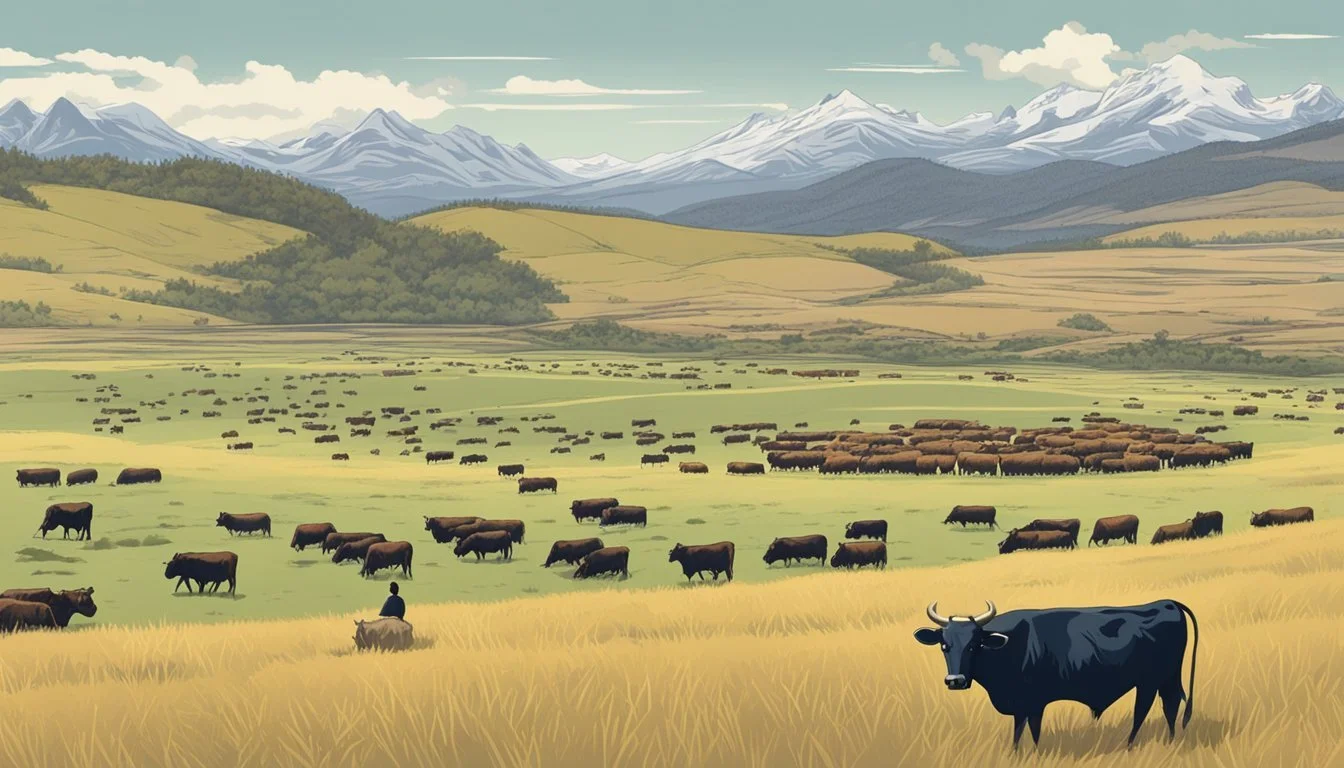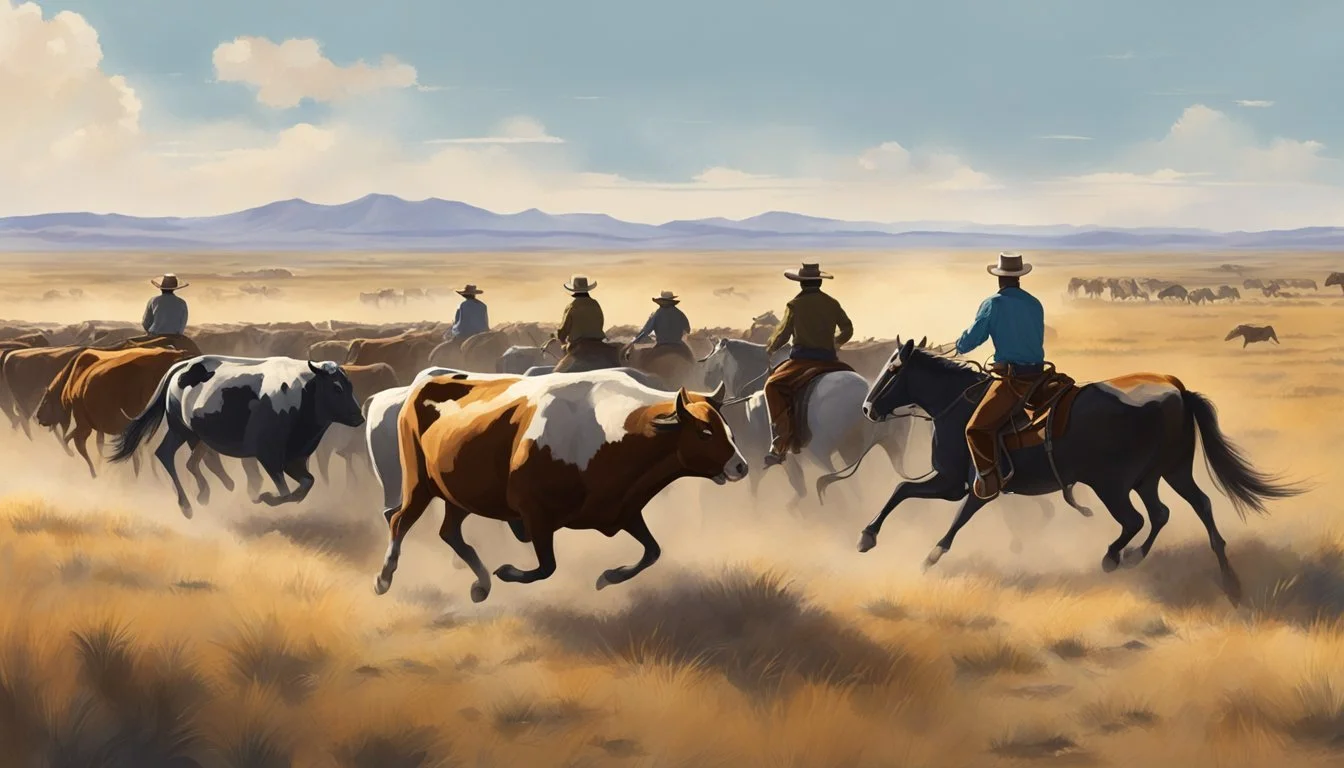Cattle Queen: The True Story Behind 'The Power of the Dog'
Exploring the Real-Life Inspiration
'The Power of the Dog' captivated audiences with its gripping tale of ranchers in 1920s Montana. While the film itself is not based on a true story, it draws inspiration from Thomas Savage's 1967 novel of the same name. The book incorporates elements from Savage's own experiences growing up on a ranch in Montana.
The novel and film explore themes of masculinity, repression, and the harsh realities of ranch life in the American West. These themes resonated with both Savage and director Jane Campion, who brought the story to life on screen. The characters, while fictional, embody complex personalities and struggles that feel authentic to the time and place.
Jane Campion's adaptation stays largely faithful to Savage's original work, preserving its nuanced portrayal of family dynamics and psychological tension. The film's success, including Campion's Oscar win for Best Director, has sparked renewed interest in the source material and its connections to real-life ranch experiences in early 20th century America.
Origins and Historical Context
The American West of the 1920s provided the backdrop for Thomas Savage's 1967 novel, which drew from his own experiences growing up on a Montana ranch. This setting shaped the characters and conflicts at the heart of "The Power of the Dog" story.
1920s Ranch Life and The American West
Ranch life in 1920s Montana was marked by hard work and isolation. Cattle operations dominated the landscape, with cowboys and ranchers facing harsh conditions. The era saw tension between traditional ways and encroaching modernization. Automobiles began replacing horses, while improved roads slowly connected remote areas.
Ranchers grappled with economic pressures and changing markets. Women on ranches often took on significant responsibilities, challenging gender norms of the time. The American West still held a mythic quality in the national imagination, even as its realities grew more complex.
Thomas Savage and The Semi-Autobiographical Novel
Thomas Savage drew heavily from his own life for "The Power of the Dog." Born in 1915, he spent his youth on a Montana ranch similar to the one in his story. The novel, published in 1967, reflected Savage's experiences and observations of ranch life in the 1920s.
Savage's insider perspective allowed him to craft authentic characters and settings. He explored themes of masculinity, repression, and family dynamics he witnessed firsthand. While fictionalized, the story's emotional core stemmed from Savage's personal history. His work provided a nuanced view of the American West, challenging romanticized notions of cowboy life.
Plot and Character Analysis
"The Power of the Dog" explores complex relationships and hidden motives through its nuanced characters. The story unfolds on a Montana ranch in 1925, revealing deep-seated tensions and psychological struggles.
The Complexity of Phil Burbank
Phil Burbank, played by Benedict Cumberbatch, is a harsh and domineering rancher. His tough exterior masks internal conflicts and repressed emotions. Phil's cruel behavior stems from his own insecurities and past traumas.
He maintains a firm grip on the ranch operations and his brother George. Phil's aggressive masculinity clashes with the sensitivity he tries to hide. His character arc reveals layers of vulnerability beneath his intimidating facade.
Phil's relationship with his late mentor Bronco Henry shapes his worldview and actions throughout the film. This complex dynamic drives much of the plot's tension.
Rose and Peter Gordon's Turbulent Lives
Rose Gordon, portrayed by Kirsten Dunst, enters the story as a widow who marries George Burbank. Her life quickly unravels under Phil's constant torment. Rose struggles with alcoholism as she tries to cope with her new hostile environment.
Peter, Rose's son, is a quiet and observant young man with a keen intellect. He forms an unlikely bond with Phil, which becomes a central element of the plot. Peter's calculated actions drive the story to its dramatic conclusion.
The mother-son relationship between Rose and Peter shifts as they navigate their new circumstances. Their struggles and choices significantly impact the film's events.
Family Dynamics and George Burbank
George Burbank, played by Jesse Plemons, stands in stark contrast to his brother Phil. He's gentler and more reserved, often caught between his loyalty to Phil and his love for Rose.
George's marriage to Rose disrupts the established order on the ranch. This change in family dynamics creates tension and conflict among all characters. His attempts to mediate between Phil and Rose often fall short, highlighting the complex web of relationships.
George's character represents a more progressive mindset compared to Phil's traditional views. This contrast drives much of the story's underlying conflict and character development.
Adaptation and Creative Vision
Jane Campion's adaptation of "The Power of the Dog" brought Thomas Savage's novel to life with striking visuals and atmospheric tension. The film's creative team crafted a haunting portrayal of the American West through innovative cinematography and a stirring musical score.
Jane Campion's Direction
Jane Campion's vision for "The Power of the Dog" centered on psychological nuance and unspoken tensions. She chose to film primarily in New Zealand, using the rugged landscape as a stand-in for 1920s Montana.
Campion focused on subtle character interactions and non-verbal cues to convey the story's complex relationships. Her direction emphasized the oppressive atmosphere of the ranch and the characters' inner turmoil.
The director's approach to pacing allowed the narrative to unfold gradually, mirroring the slow-burning nature of the source material.
Cinematography and Visual Storytelling
Cinematographer Ari Wegner collaborated closely with Campion to create the film's distinctive visual style. They employed wide shots to showcase the vast, isolating landscape that mirrors the characters' emotional states.
Wegner's use of natural light and shadow added depth to interior scenes, highlighting the claustrophobic feel of the ranch house. The cinematography emphasized contrasts between the harsh exterior world and the stifling domestic spaces.
Close-ups were strategically used to capture micro-expressions, revealing characters' hidden thoughts and motivations. This visual approach enhanced the story's underlying tensions and unspoken desires.
Musical Score and Its Emotional Impact
Jonny Greenwood's musical score for "The Power of the Dog" played a crucial role in shaping the film's emotional landscape. The composer created a haunting soundscape that blended orchestral elements with unconventional instruments.
Greenwood's score incorporated discordant strings and eerie wind instruments to reflect the psychological unease permeating the story. The music often built tension through subtle, dissonant tones rather than overt melodies.
The score's restraint in key scenes amplified the impact of silence, allowing the actors' performances and the visual storytelling to take center stage. This approach enhanced the film's atmosphere of repressed emotions and hidden motivations.
Themes and Cultural Commentary
"The Power of the Dog" explores complex themes of identity, power dynamics, and societal expectations in 1920s Montana. The film's nuanced portrayal of characters grappling with internal struggles and external pressures offers rich cultural commentary.
Masculinity and Repression
Phil Burbank embodies toxic masculinity and repression. His aggressive behavior masks deep-seated insecurities and desires. He ridicules those who don't meet his narrow definition of manhood.
Phil's dedication to ranching and rejection of "softness" reflect societal pressure on men to be stoic and unemotional. His cruelty stems from fear of his own vulnerabilities.
The film critiques how rigid gender norms can warp personalities and relationships. It shows the damage caused by suppressing one's true nature to fit prescribed roles.
Sexuality and Homoerotic Subtext
The story contains strong homoerotic undertones, particularly in Phil's fixation on his mentor Bronco Henry. Phil's interactions with Peter are charged with sexual tension.
Phil's sexuality remains ambiguous, highlighting the era's repression of same-sex desire. His aggression may mask his attraction to men.
The film explores how homophobia and heteronormativity force gay men to hide their identities. It depicts the psychological toll of denying one's sexuality in an intolerant society.
Alienation and the Theme of Outsiderness
Rose and Peter are clear outsiders in the ranch setting. Their refinement clashes with the rough cowboy culture.
Phil's intelligence and hidden sensitivity also set him apart, despite his attempts to embody rugged masculinity. His cruelty stems partly from feeling alienated.
The harsh landscape mirrors the characters' isolation. Wide shots emphasize their smallness against the vast, indifferent wilderness.
The film examines how those who don't conform to social norms face exclusion and loneliness. It shows the struggle to find belonging in an unaccepting world.
Casting and Performances
The casting choices for "The Power of the Dog" brought together a talented ensemble of actors who delivered nuanced and compelling performances. Their portrayals breathed life into the complex characters of Thomas Savage's novel.
Benedict Cumberbatch as Phil Burbank
Benedict Cumberbatch's transformation into the rough and domineering Phil Burbank was a departure from his usual roles. He immersed himself in the character, learning to ride horses, rope cattle, and play the banjo. Cumberbatch's portrayal captured Phil's menacing presence and hidden vulnerabilities.
The actor maintained his character's American accent even when off-camera to stay in character. His performance earned critical acclaim and numerous award nominations, including an Oscar nod for Best Actor.
Kirsten Dunst and Jesse Plemons' On-Screen Dynamic
Real-life couple Kirsten Dunst and Jesse Plemons brought authenticity to their roles as Rose and George Burbank. Dunst portrayed Rose's descent into alcoholism with subtle intensity, while Plemons embodied George's quiet strength.
Their off-screen relationship translated into a believable on-screen connection. Dunst and Plemons' performances complemented each other, creating a palpable tension in their scenes with Cumberbatch's Phil.
Both actors received Oscar nominations for their supporting roles, highlighting the strength of their performances.
Kodi Smit-McPhee's Breakout Role
Kodi Smit-McPhee's portrayal of Peter Gordon marked a significant milestone in his career. His nuanced performance as the sensitive and calculating young man showcased his range as an actor.
Smit-McPhee brought depth to Peter's character, balancing vulnerability with a hidden strength. His scenes with Cumberbatch were particularly praised for their subtle power dynamics.
The role earned Smit-McPhee widespread recognition, including an Oscar nomination for Best Supporting Actor. His performance was crucial in driving the film's unexpected narrative turns.
Public and Critical Reception
"The Power of the Dog" received widespread acclaim from critics and audiences alike. The film garnered numerous accolades and sparked thoughtful discussions about its themes and artistry.
Awards and Nominations
"The Power of the Dog" dominated the 2022 awards season. It received 12 Oscar nominations, including Best Picture and Best Director for Jane Campion. Campion won the Academy Award for Best Director, making her the third woman to receive this honor.
The film also triumphed at other prestigious ceremonies. It won three Golden Globe Awards, including Best Motion Picture - Drama. At the BAFTAs, it secured Best Film and Best Director.
Benedict Cumberbatch, Kirsten Dunst, and Kodi Smit-McPhee earned acting nominations across multiple award shows for their performances. The film's cinematography, score, and adapted screenplay also received recognition.
Critical Analysis and Rotten Tomatoes Score
Critics praised "The Power of the Dog" for its nuanced storytelling and visual beauty. The film holds a 94% approval rating on Rotten Tomatoes, based on 318 reviews. Critics commended Campion's direction, the cast's performances, and the film's exploration of masculinity and repression.
Many reviewers highlighted the film's subtle tension and psychological depth. The New York Times called it "a moving exploration of masculinity and its discontents." The film's Western setting and subversion of genre expectations also drew praise.
Some critics noted the film's deliberate pacing might challenge viewers expecting a traditional Western. However, most agreed that the slow-burn approach enhanced the story's impact and character development.
Social Impact and Legacy
"The Power of the Dog" challenged traditional Western narratives and sparked conversations about representation in cinema. Its portrayal of complex characters and exploration of masculinity left a lasting impact on the genre and LGBTQ+ storytelling.
Representation and the Impact on LGBTQ+ Narratives
The film broke new ground in its depiction of queer themes in a Western setting. Benedict Cumberbatch's portrayal of Phil Burbank, a closeted gay rancher, brought nuanced LGBTQ+ representation to mainstream audiences. This challenged stereotypes and expanded the scope of queer narratives in Hollywood.
The movie's success at award shows, including its status as an Oscars frontrunner, further elevated LGBTQ+ stories in the film industry. It paved the way for more diverse and inclusive storytelling in mainstream cinema.
Critics praised the film for its sensitive handling of complex sexuality and repression themes. This approach encouraged more open discussions about LGBTQ+ experiences in rural and historical contexts.
The Film's Influence on Modern Westerns
"The Power of the Dog" reinvigorated the Western genre by subverting traditional tropes. It moved away from simplistic good vs. evil narratives, presenting morally ambiguous characters with depth and complexity.
The film's focus on psychological tension rather than physical violence redefined expectations for modern Westerns. This shift inspired filmmakers to explore new storytelling techniques within the genre.
Its critical acclaim demonstrated the continued relevance and artistic potential of Western films. This success encouraged studios to invest in more diverse and thought-provoking Western narratives.
The movie's exploration of toxic masculinity and power dynamics in the American West sparked conversations about gender roles in historical contexts. This fresh perspective influenced how filmmakers approach character development in period pieces.








